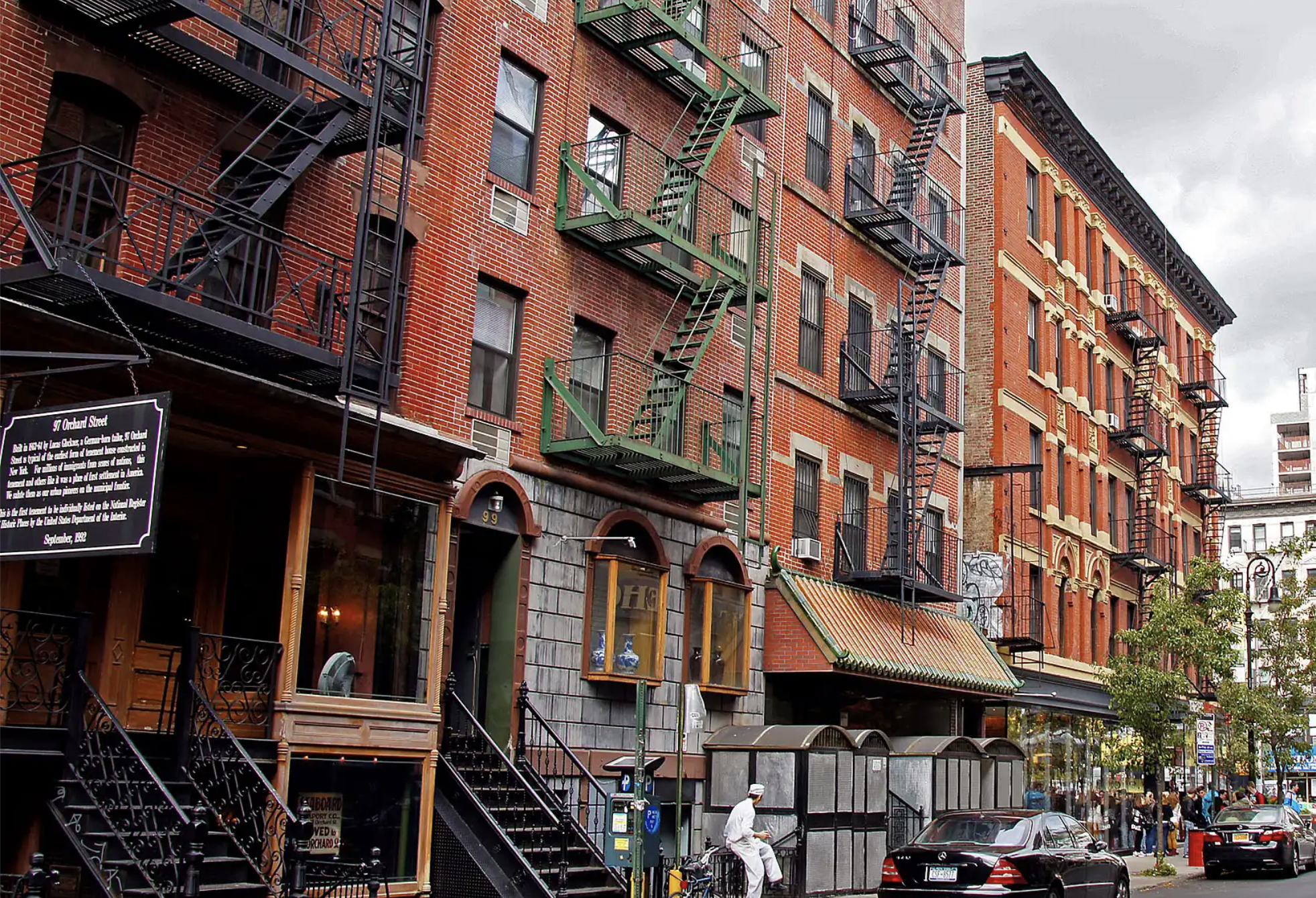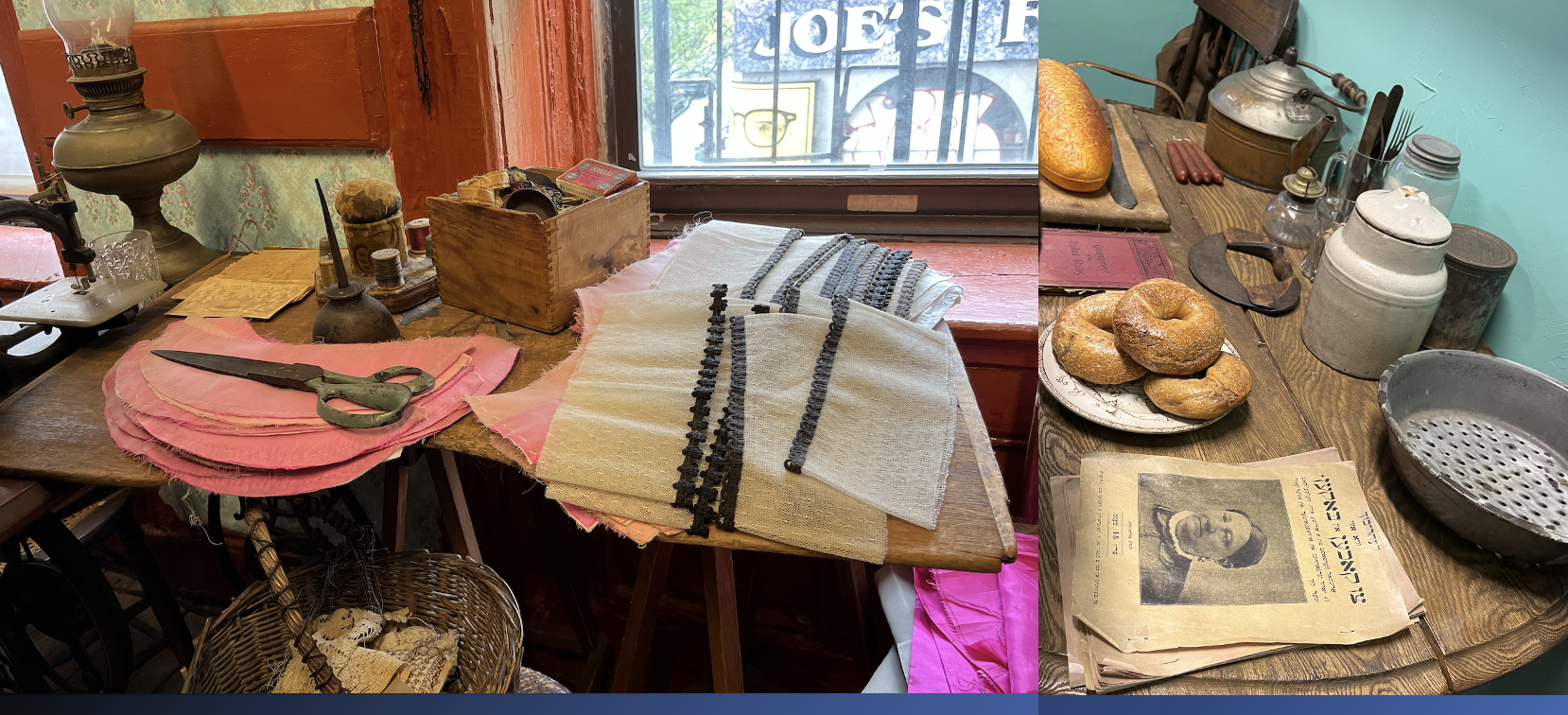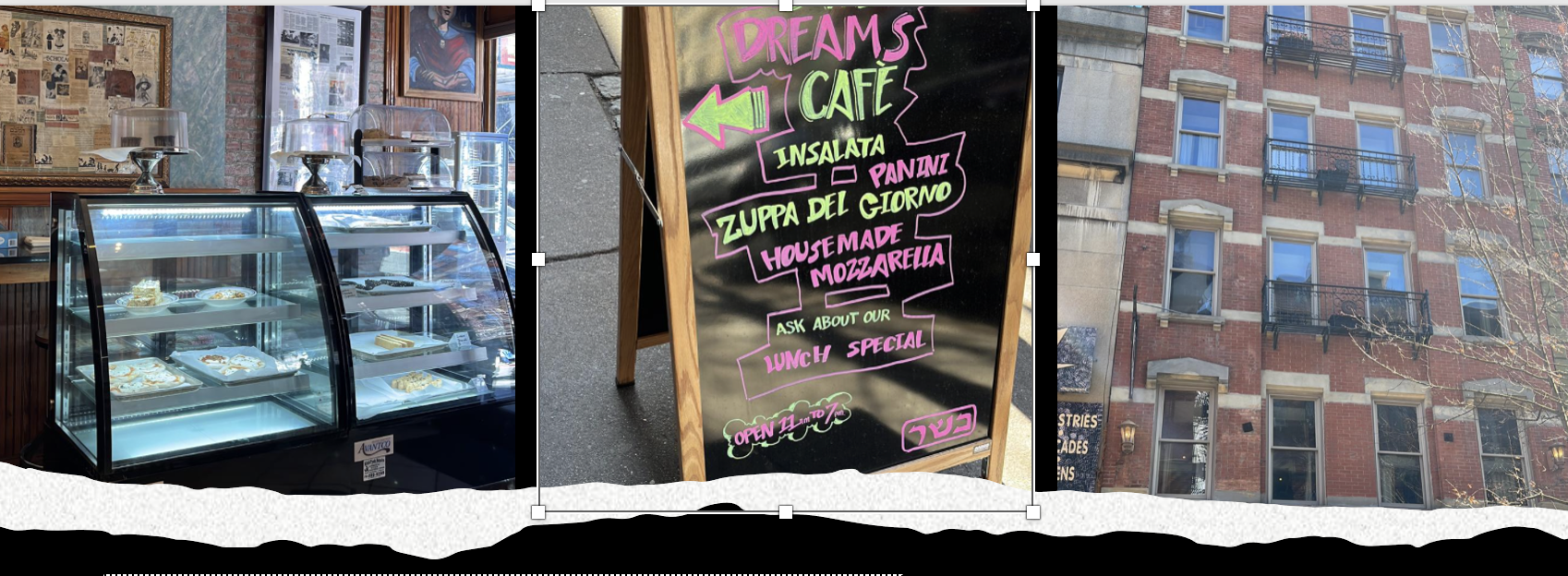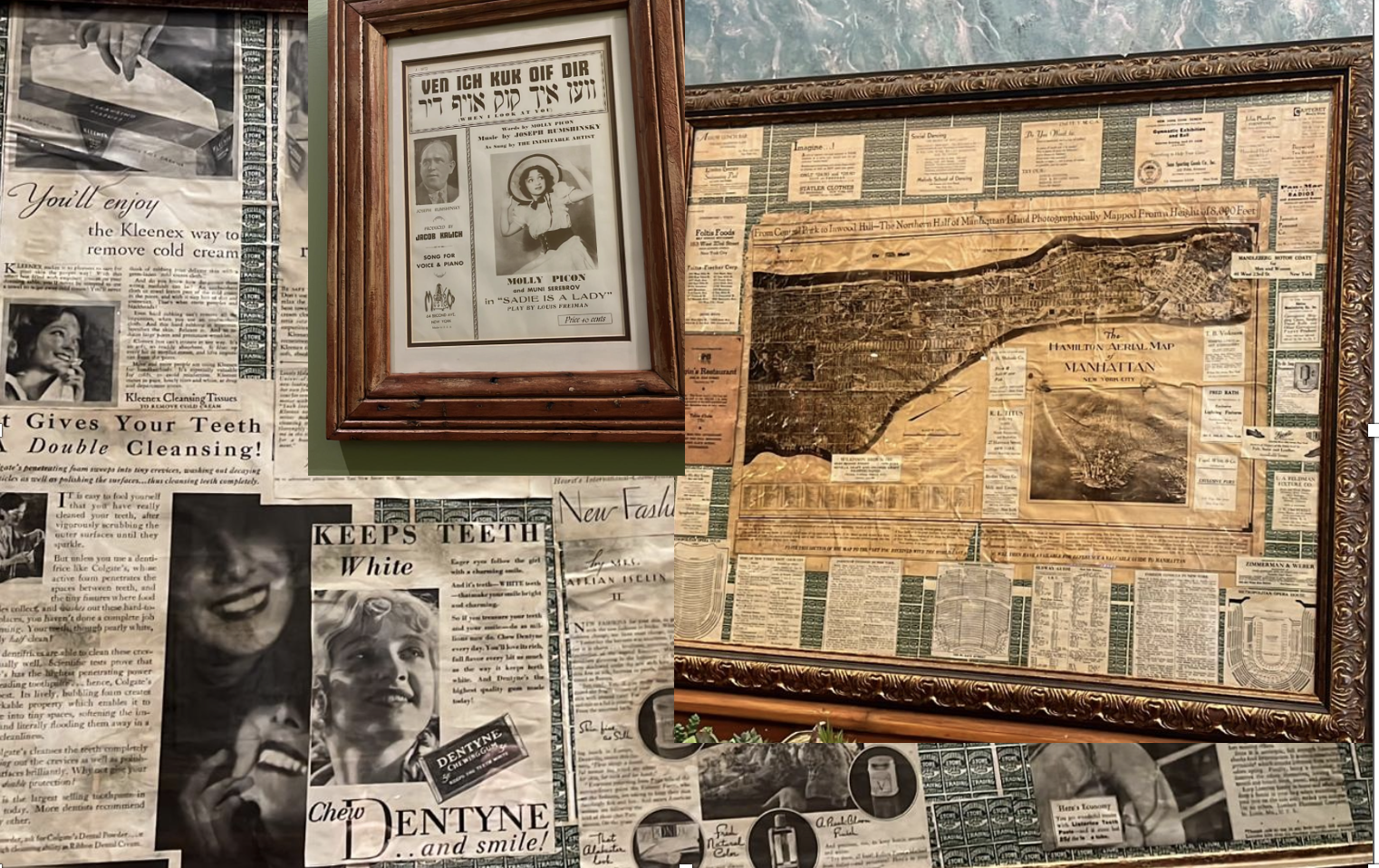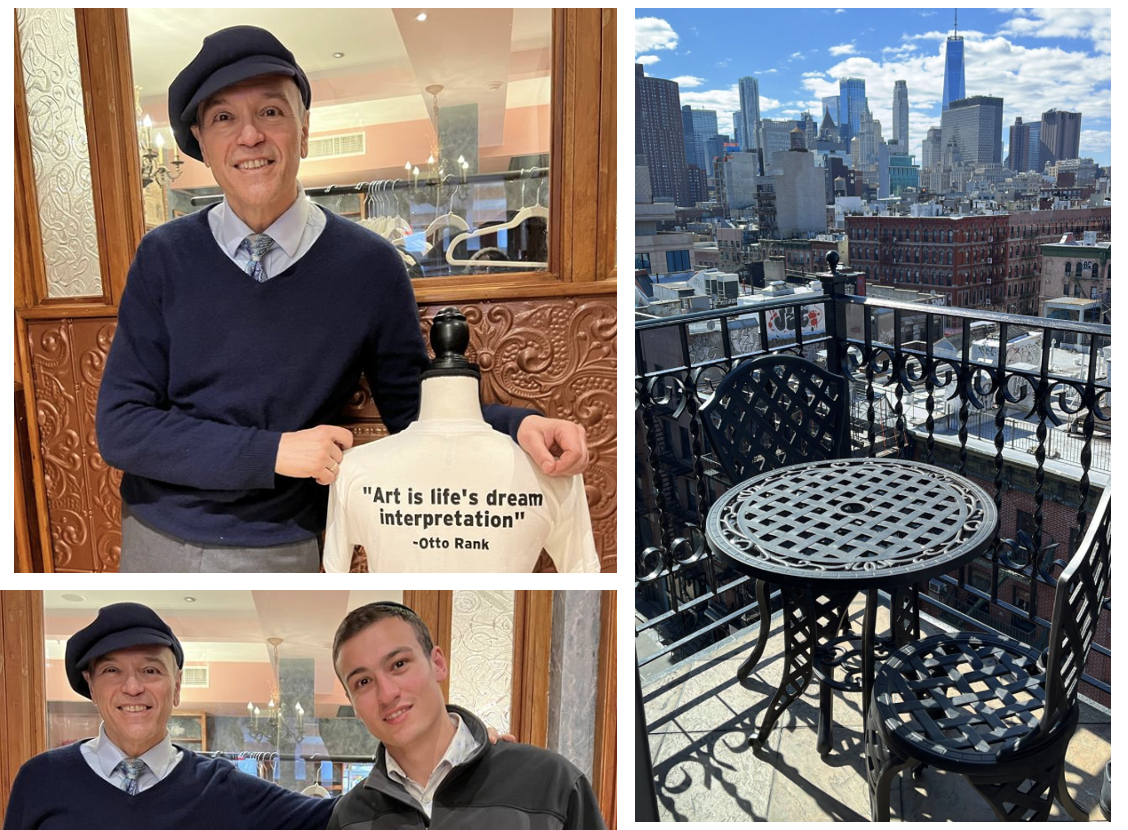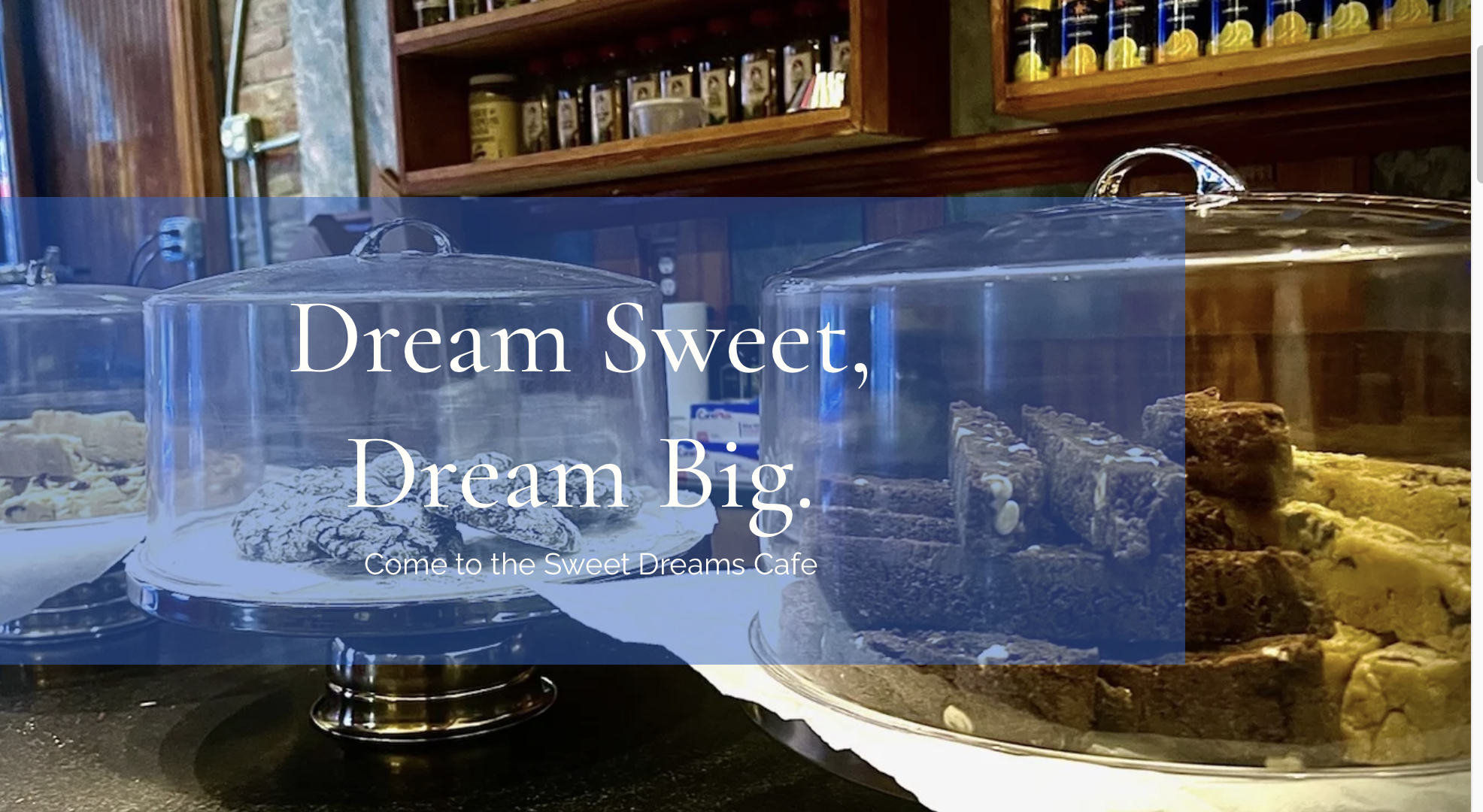Sweet Orchard Street
By Sue Weston and Susie Rosenbluth, Two Sues on the Aisle
Discovering the past often involves storytelling. For many American Jews whose forbears immigrated to this country in the late 19th and early 20th centuries, this chapter has long been blank except for names and dates. Many of their families entered through Ellis Island and settled on the Lower East Side of Manhattan, and, for them, some of the still-extant buildings provide context and character, filling gaps with information and answers.
Two of these buildings are situated across from one another on Orchard Street between Broome and Delancey. The Tenement Museum and the Blue Moon Hotel with its attached Sweet Dreams Café are reminders of what life was like for Jewish—and other—immigrants at the turn of the 20th century. They allow modern-day visitors to walk through the hallways and parlors in which so many Bubbies and Zaydies began their lives in America.
A picture is worth a thousand words, which means walking into these buildings offers a connection with the ghosts of our past.
Tenement Apartment Tours
The Tenement Museum’s Tenement Tours is a testament to the scope of the digging researchers had to accomplish into the lives of many of the specific families who lived in these spaces. Just as the technical experts who worked on the renovated rooms peeled back layers of wallpaper and linoleum to expose their humble origins, knowledgeable guides share stories of life in the Lower East Side. The spaces are furnished with period objects, set up as they would have looked.
The museum’s focus is on building a vibrant connection between the past and the future, bridging the generational gap. The curators have taken the time to locate families of former tenants, some of whom have donated heirlooms, allowing the Tenement Museum to bring history to life while gathering oral narratives that would otherwise have been lost. It’s that connection with surviving family members that makes the Tenement Museum so special.
Decades of Life
The structure at 97 Orchard Street was occupied from 1863, when it was built, until it was condemned in 1941, for failing to meet fire safety laws. It was home to over 15,000 people from 20 different countries, making it a cultural melting pot, or as Grace McGookey the museum’s lead educator, describes it, “a container of stories.”
One recent tour focused on the role of immigrant women in 1902. The example was the real-life Jennie Levine, who managed a household and oversaw family finances while her husband ran a garment “factory” in their front room. Without running water and only a communal privy downstairs (buckets of water had to be carried for cooking and cleaning), their three-room apartment accommodated the Levys’ growing family and business.
In addition to the business, the front room also served as the place in which Jennie’s children were born and raised. Alongside the work area for pressing garments was the kitchen (with its coal stove) which doubled as dining and sleeping areas, separated only by doorframes. The rooms had no cross ventilation with light coming from windows that faced the street.
And The Levys certainly weren’t alone. In February 2021, The Jewish Voice and Opinion shared the story of the Rogarshevsky family, who raised six children in their 97 Orchard Street apartment in 1911.
Worth the Time
While the museum attracts many tourists, it is often overlooked by native New Yorkers, which is really a shame because it is well worth the time. Tours are easy to schedule, and those who make the effort will find the Tenement Museum has something for everyone.
We were especially taken with its multi-media experience that includes a video presentation and immersive 360 photos, alongside display cases housing antiquities.
The Tenement Museum itself is located at 108 Orchard St; it consists of two historic tenement buildings and is an affiliate site of the National Trust for Historic Preservation.
Tours are provided Friday–Wednesday, from 10:00 a.m.–6:30 p.m. and on Thursdays from 10:00 a.m.–8:30 p.m. For more information call 877-975-3786.
Cross the Street to the Blue Moon Hotel
Before or after a visit to the Tenement Museum, visitors would be well advised to cross the street and, at 100 Orchard Street, step back in time to enter Sweet Dreams Café. Located on the ground floor of the Blue Moon Hotel, the small restaurant offers kosher, homemade, family-based Italian dishes.
The building, a former tenement, built in 1879, was lovingly restored by the Passaic, NJ-based Settenbrino family, starting in 2001.
An exploration of the rooms of this abandoned building that had been closed for 70 years provided a time capsule waiting to be discovered, literally untouched since it was shuttered in 1931.
Salvaging Artifacts
Randy Settenbrino, the visionary behind the restoration, salvaged fixtures as if they were artifacts and then went on to personalize the space with art that included not only pieces to be framed but also hand-painted marbling on the walls and collages of memorabilia.
As a result, the Blue Moon Hotel is a fascinating gem in which the past has been preserved in a converted, functional, contemporary space, filled with memories—and an artsy eatery.
Mr. Settenbrino, a celebrated artist in his own right, personally managed all aspects of the building’s transformation. The rooms, staircases, and halls emerged from rubble to be brought back to life as Mr. Settenbrino repurposed the wealth of abandoned details.
For example, in Mr. Senttenbrino’s hands, wood moldings became picture frames encasing newspaper clippings, maps, and even homework assignments. Wrought iron from the original fire escapes formed elegant window balconies, providing visitors with panoramic views of Lower Manhattan.
The hotel’s carefully detailed decorations begin with mosaics in the entry vestibule and progress to memorabilia placed throughout the lobby and adorning every common space. Nothing was left to chance, and every item discovered by Mr. Settenbrino or his children found a place.
On a recent tour of the hotel, the older Mr. Settenbrino pointed out that he even used the original hinges and knobs on closet doors. Even recovered typewriter tins are some of the many items uncovered in the abandoned building.
Restored and Repurposed
The hotel itself is a labor of love, each room and suite dedicated to a Jewish performer from the decades in which the building was alive with tenants. It would be hard for any student of early Yiddish theatre not to be impressed by the Molly Picon room.
The rooms are impeccably staged, complete with marble counters and wooden fireplace mantels covering wrought-iron grilles. There are, of course, modern conveniences in each room, including electric cooktops.
In the hallways on each floor, pictures adorn the walls, creating a consistent, charming motif, reminding visitors they are momentarily stepping back in time.
Recent visitors were struck by the various collages designed by Mr. Settenbrino, featuring a wide array of items he found in the wreckage, all left by former residents who’d probably forgotten all about them. These included Depression-era Green Stamps discovered along with pawnshop tickets and cutout printed articles that had appeared in Cosmopolitan, The Sun, The News, and Scholastic. Samples of a young boy’s elementary school homework assignment stand framed next to Sunday school lessons and a pristine Boy Scout membership card from the 1920s. There is also the very first aerial view of Manhattan.
The Blue Moon Hotel is an archeological exploration and has been certified as a historic site.
Sweet Dreams Cafe
Those visiting the hotel to enjoy its historic flavor would be well advised to stay and taste the kosher dairy Italian homemade dishes offered in the hotel’s Sweet Dreams Café.
Often served by Mr. Settenbrino himself, the fare ranges from coffee and pastries to light meals featuring soups, salads, and paninis. Mr. Settenbrino takes distinct pride in the café’s homemade mozzarella and pasta dishes, including his own personal favorite: broccoli rabe frittata with potatoes, garlic, and eggs.
Sitting in a historical site and sampling Settenbrino family favorites, accompanied by a curated selection of fine wines and beers, is not your usual New York experience, but it’s one that feels very suited to the nostalgic atmosphere. Inspired by the beloved Nona Carolina’s Trattoria Vesuvius, the menu reverently reflects her 1930s Italian artisan cooking, all prepared and served up fresh—and kosher. Even the bakery items are prepared fresh each morning.
The Sweet Dreams Café is open from 11 a.m. to 7 p.m., Sundays through Thursdays, and on Fridays, from 11 a.m. to 4 p.m.
Everything about the café and hotel, from the selection of the plates to the period décor, bears Mr. Settenbrino’s keen attention to detail, offering authenticity that creates an unmistakable tie to the bygone era of the tenements.
Renovations, such as the one undertaken by Mr. Settenbrino at the Blue Moon, are one way to keep the Jewish past vibrant and visible, rekindling the magic of family memories and adding color and context to the stories.
Importance of Location
Whereas the Tenement Museum focuses on exploring and explaining the lives of a few residents who become emblematic of the whole, the Blue Moon shares another story, thanks to Mr. Settenbrino’s artistic vision, which called for creative displays of remnants left behind by the immigrants.
Both are time capsules of the Jewish immigrants’ experience in New York City. We can never know the full stories of all the people who inhabited these spaces, but there is a sense of being in their presence, and seeing their possessions is a powerful, heartwarming experience as history and today’s luxury collide in the increasingly gentrifying Lower East Side—or, as it is often referred to now, the East Village.
This area, which was once a bastion of Eastern European Orthodox Jewry has given way to other immigrant populations, although the Jewish presence is still significant.
A Shomer Shabbos, Kosher Hotel?
It would be wonderful if the Blue Moon Hotel would consider accommodating Shomer Shabbos visitors. Such patrons could attend any number of local synagogues and would be part of a rekindling of Jewish life in the neighborhood.
According to Mr. Settenbrino, there has not been much call for a kosher hotel in the Lower East Side, but it’s always hard to decide which comes first. The old saying—if you build it, they will come—may still hold true, and the neighborhood could still provide a draw that would create a demand.
The Blue Moon’s unique and lavish accommodations offer awe-inspiring views of the Lower Manhattan skyline. There is kosher food available at the Sweet Dreams Café and at many other venues. If Mr. Settenbrino builds it, they will come, and creating a kosher-friendly hotel in the Lower Eastside may be the first step to bringing the Jewish community back to the area for at least a Shabbos or two.

